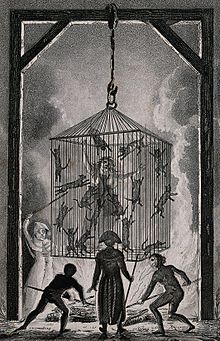
Midwifery is the health science and health profession that deals with pregnancy, childbirth, and the postpartum period, in addition to the sexual and reproductive health of women throughout their lives. In many countries, midwifery is a medical profession. A professional in midwifery is known as a midwife.

Agnodice or Agnodike is a legendary figure credited as the first female midwife or physician in ancient Athens. Her story is told by the Roman author Gaius Julius Hyginus in his Fabulae. Agnodice is not generally believed to be a historical figure, but her story has been deployed in support of and in opposition to women practicing midwifery or medicine.

William Smellie was a Scottish obstetrician and medical instructor who practiced and taught primarily in London. One of the first prominent male midwives in Britain, he designed an improved version of the obstetrical forceps, established safer delivery practices, and through his teaching and writing helped make obstetrics more scientifically based. He is often called the "father of British midwifery".
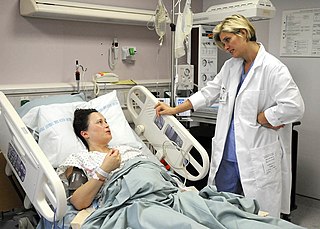
In the United States, a Certified Nurse-Midwife (CNM) is a nurse midwife who exceeds the International Confederation of Midwives' essential competencies for a midwife and is also an advanced practice registered nurse, having completed registered nursing and midwifery education leading to practice as a nurse midwife and credentialing as a Certified Nurse-Midwife. CNMs provide care of women across their lifespan, including pregnancy and the postpartum period, and well woman care and birth control. Certified Nurse-Midwives are recognized by the International Confederation of Midwives as a type of midwife in the U.S.
Jane Sharp was an English midwife. Her work The Midwives Book: or the Whole Art of Midwifery Discovered, published in 1671, was the first on the subject to be produced by an Englishwoman.
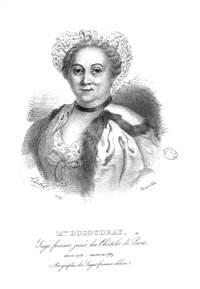
Angélique Marguerite Le Boursier du Coudray was an influential, pioneering midwife during her lifetime, who gained fame when men were taking over the field. She rose from middle-class origins to become noticed and commissioned by King Louis XV himself.
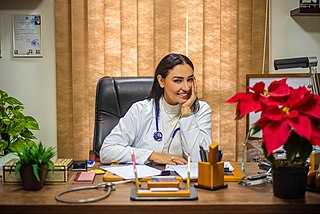
The presence of women in medicine, particularly in the practicing fields of surgery and as physicians, has been traced to the earliest of history. Women have historically had lower participation levels in medical fields compared to men with occupancy rates varying by race, socioeconomic status, and geography.

Catharina Geertruida Schrader (1656–1746), also known as the Frisian Midwife, was a successful Dutch midwife in the Early Modern Era, known for her detailed notebooks and memoirs relating the numerous births she participated in.
Childbirth in rural Appalachia has long been a subject of concern amongst the population because infant mortality rates are higher in Appalachia than in other parts of the United States. Additionally, poor health in utero, at birth, and in childhood can contribute to poor health throughout life. The region's low income, geographic isolation, and low levels of educational attainment reduce both access to and utilization of modern medical care. Traditional medical practices, including lay midwifery, persisted longer in Appalachia than in other U.S. regions.

Louise (Bourgeois) Boursier (1563–1636) was royal midwife at the court of King Henry IV of France and the first female author in that country to publish a medical text.[1] Largely self-taught, she delivered babies for and offered obstetrical and gynecological services to Parisian women of all social classes before coming to serve Queen Marie de Medicis in 1601.[2] Bourgeois successfully delivered Louis XIII, King of France (1601) and his five royal siblings: Elizabeth, Queen of Spain (1602); Christine Marie, Duchess of Savoy (1607); Nicolas Henri, Duke of Orléans (1607); Gaston, Duke of Orléans (1608); and Henrietta Maria, Queen of England, Queen of Scots, and Queen of Ireland (1609). In 1609, Bourgeois published the first of three successive volumes on obstetrics: Observations diverses sur la sterilité, perte de fruict, foecondite, accouchements et maladies des femmes et enfants nouveaux naiz / Amplement traictees et heureusement praticquees par L. Bourgeois dite Boursier. Subsequent volumes were published in 1617 and 1626, also in Paris.[3]
In the United States, certified nurse midwives (CNMs) are advanced practice registered nurses in nurse midwifery, the nursing care of women during pregnancy and the postpartum period. CNMs are considered as midwives.
Jewish medicine is medical practice of the Jewish people, including writing in the languages of both Hebrew and Arabic. 28% of Nobel Prize winners in medicine have been Jewish, although Jews comprise less than 0.2% of the world's population.
Midwives in the United States assist childbearing women during pregnancy, labor and birth, and the postpartum period. Some midwives also provide primary care for women including well-woman exams, health promotion, and disease prevention, family planning options, and care for common gynecological concerns. Before the turn of the 20th century, traditional midwives were informally trained and helped deliver almost all births. Today, midwives are professionals who must undergo formal training. Midwives in the United States formed the Midwifery Education, Regulation, and Association task force to establish a framework for midwifery.
Mary Francis Hill Coley was an American lay midwife who ran a successful business providing a range of birth services and who starred in a critically acclaimed documentary film used to train midwives and doctors. Her competence projected an image of black midwives as the face of an internationally esteemed medical profession, while working within the context of deep social and economic inequality in health care provided to African Americans. Her life story and work exist in the context of Southern granny midwives who served birthing women outside of hospitals.

A direct-entry midwife is a midwife who has become credentialed without first becoming a nurse. There are direct-entry midwifery programs that prepare students to become Certified Nurse Midwives (CNMs) or Certified Professional Midwives (CPMs). Certified Professional Midwives are known for being "more natural and less intervention oriented." In other words, these midwives typically work outside of the hospital setting in homes and birth centers and do not employ methods for childbirth that physicians in hospitals commonly use such as caesarean section, forceps and other types of equipment and drugs.
Sarah Stone was an English midwife and author during the early modern period. She advocated for the better education of female midwives, speaking out against the rise of male-midwives in her line of work. She is considered a "champion of her sex and a disciple and advocate of the Enlightenment."
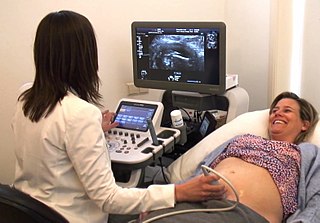
A midwife is a health professional who cares for mothers and newborns around childbirth, a specialization known as midwifery.

A nurse midwife is both a nurse and a midwife, having completed nursing and midwifery education leading to practice as a nurse midwife and sometimes credentialed in the specialty. Nurse midwives provide care of women across the lifespan, including during pregnancy and the postpartum period, and well woman care and birth control.
Margaret Charles Smith was an African-American midwife, who became known for her extraordinary skill over a long career, spanning over thirty years. Despite working primarily in rural areas with women who were often in poor health, she lost very few of the more than 3000 babies she delivered, and none of the mothers in childbirth. In 1949, she became one of the first official midwives in Green County, Alabama, and she was still practicing in 1976, when the state passed a law outlawing traditional midwifery. In the 1990s, she cowrote a book about her career, Listen to Me Good: The Life Story of an Alabama Midwife, and in 2010 she was inducted into the Alabama Women's Hall of Fame.
Early Modern Europe marked a period of transition within the medical world. Universities for doctors were becoming more common and standardized training was becoming a requirement. During this time, a few universities were beginning to train women as midwives, but rhetoric against women healers was increasing. The literature against women in medicine started in the 13th century, and the Early Modern period gave way to a widespread call for licensing and proper training for midwives, which was largely unavailable.
